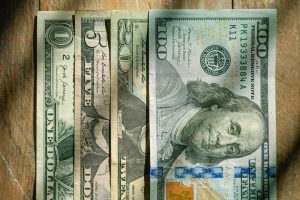Forex trading is a complex and dynamic financial market that requires a strategic approach to be successful. One of the most important aspects of trading is knowing where to place stops and profits to maximize potential gains and minimize losses.
Stops and profits refer to the points at which a trader will exit a trade, either to lock in profits or to limit losses. These points are crucial because they determine the risk and reward of a trade and can have a significant impact on a trader’s overall success.
Stop Loss Orders
A stop-loss order is an order placed with a broker to sell a security when it reaches a certain price. In forex trading, a stop-loss order is used to limit losses on a trade. A stop-loss order is triggered when the price of a currency pair reaches a specified level, which is set by the trader.
The purpose of a stop-loss order is to limit losses by exiting a trade before the losses become too large. For example, if a trader buys a currency pair at 1.2500 and sets a stop-loss order at 1.2450, the trade will automatically close if the price drops below 1.2450. This will limit the trader’s losses to 50 pips.
It is important to note that stop-loss orders are not foolproof and can be subject to slippage, which is when the price of a currency pair moves quickly and the stop-loss order is executed at a different price than the one set by the trader. To minimize the risk of slippage, traders can use guaranteed stop-loss orders, which are offered by some brokers.
Take Profit Orders
A take-profit order is an order placed with a broker to sell a security when it reaches a certain price. In forex trading, a take-profit order is used to lock in profits on a trade. A take-profit order is triggered when the price of a currency pair reaches a specified level, which is set by the trader.
The purpose of a take-profit order is to lock in profits by exiting a trade before the price reverses and the profits are lost. For example, if a trader buys a currency pair at 1.2500 and sets a take-profit order at 1.2550, the trade will automatically close if the price reaches 1.2550. This will lock in the trader’s profits at 50 pips.
It is important to note that take-profit orders can also be subject to slippage, which can result in the trader receiving less profit than anticipated. To minimize the risk of slippage, traders can use guaranteed take-profit orders, which are also offered by some brokers.
Risk-Reward Ratio
The risk-reward ratio is a measure of the potential risk and reward of a trade. It is calculated by dividing the potential reward by the potential risk. For example, if a trader sets a stop-loss order at 50 pips and a take-profit order at 100 pips, the risk-reward ratio is 1:2.
The risk-reward ratio is an important consideration when placing stops and profits because it can help traders determine if a trade is worth taking. A high risk-reward ratio means that the potential reward is greater than the potential risk, which can make the trade more attractive. On the other hand, a low risk-reward ratio means that the potential risk is greater than the potential reward, which can make the trade less attractive.
Final Thoughts
Placing stops and profits is a crucial aspect of forex trading that can have a significant impact on a trader’s success. Stop-loss orders are used to limit losses on a trade, while take-profit orders are used to lock in profits. Traders should also consider the risk-reward ratio when placing stops and profits to ensure that the potential reward is greater than the potential risk. By using a strategic approach to placing stops and profits, traders can increase their chances of success in the forex market.





